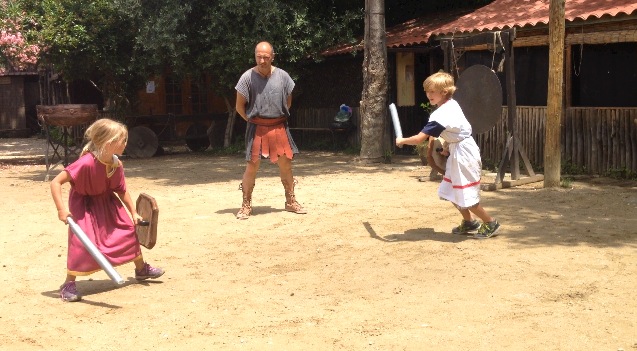“Brothers, what we do in life echoes in eternity.” (Maximus, The Gladiator)
We covered the history of the church in Rome. We covered architectural marvels such at the Pantheon and the Colosseum. We studied daily life in the Forum and the piazzas. We avoided glorifying the gladiator as long as possible. On our second trip to Rome, 9 months after the first, the gladiator took center stage and we knew it was time to jump into this part of history with our heads up, or look the other direction.
Gladiators have been described as being cursed with “the paradoxical glamour of the conspicuously disgraced,” (Edwards, 1997). What more do 9 and 10-year-old boys need to engage in history than battles with exotic animals and fellow criminals to the death?
It was important for the kids to understand the gladiator’s role in Ancient Rome starting in the Third Century and why there is an allure still surrounding these warriors today. I also knew I was not the one to teach them, so we signed up for Gladiator School as a family.
We learned about the first forms of what we know today as psychological warfare and chemical warfare and how closely related the gladiator tradition was to the Roman soldiers. We were taught how to attack, how to defend, and how to die with honor while touching and wearing and feeling the weight of artifacts from this time in history.
I am grateful to the gladiators for being a portal to jump through with my children that engaged them enough to want to devour the complex and layered history of Ancient Rome. I don’t think anything less glamorous or disgraceful could have attracted them with the same tenacity.
What I learned is not to look away. Every piece of history, no matter how sordid, is a gateway to a deeper understanding of the path that leads to now.



